.

Young Emperor Penguin (Aptenoydes forsteri) which arrived at Peka Peka Beach on the Kapiti Coast, North Island, New Zealand, 20 June 2011, having strayed more than 3000 km. (1900 miles) from its Antarctic home: photo by Richard Gill/AFP/New Zealand Department of Conservation

A photographer approaches the Emperor Penguin found wandering on a North Island beach in New Zealand, 21 June 2011: photo by AFP/AP
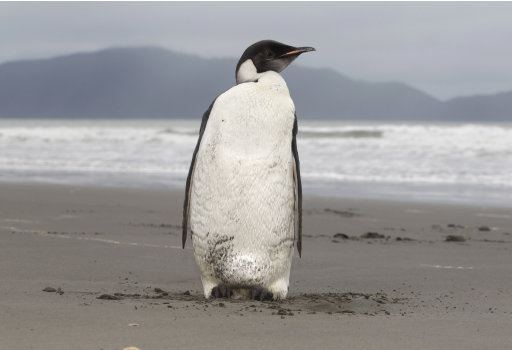
Emperor Penguin seen on Peka Peka Beach of the Kapiti Coast, New Zealand: photo by AP, 21 June 2004
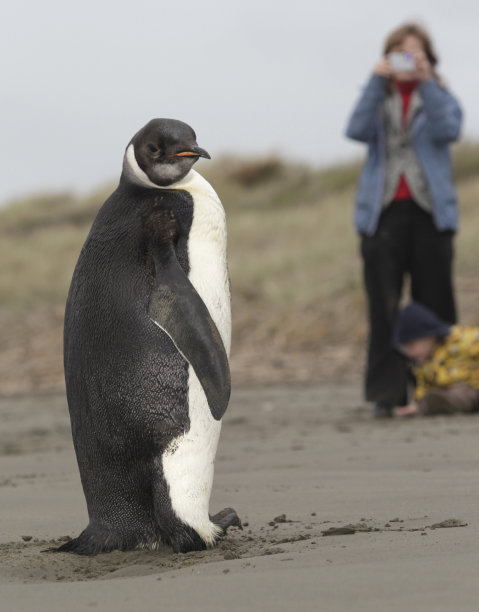
A woman photographs the stranded Emperor Penguin on Peka Peka Beach of the Kapiti Coast, New Zealand: photo by AP, 21 June 2004
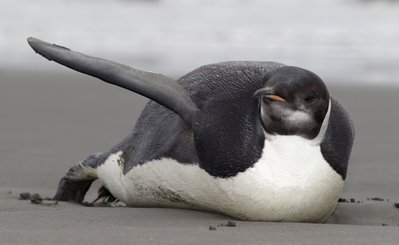
Stranded Emperor Penguin on Peka Peka Beach of the Kapiti Coast, New Zealand: photo by AP, 21 June 2004. New Zealand Department of Conservation spokesman Peter Simpson said the penguin, which is used to sub-zero temperatures, was eating sand in an apparent bid to cool down. Emperor Penguins in the Antarctic eat snow when they get too hot. "It was eating sand and small sticks, it was standing up then lying down and attempting to regurgitate the sand."
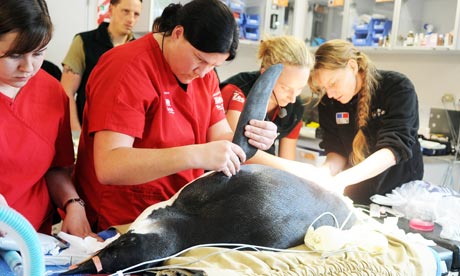
The Emperor Penguin being treated by staff at Wellington Zoo, New Zealand: photo by Ross Setford/AP via The Guardian, 24 June 2004. Wellington Zoo spokeswoman Kate Baker said an X-ray of the stranded Emperor Penguin had showed a lot of sand in his throat and stomach. "It's still touch and go," she told New Zealand Press Association of the penguin's condition.
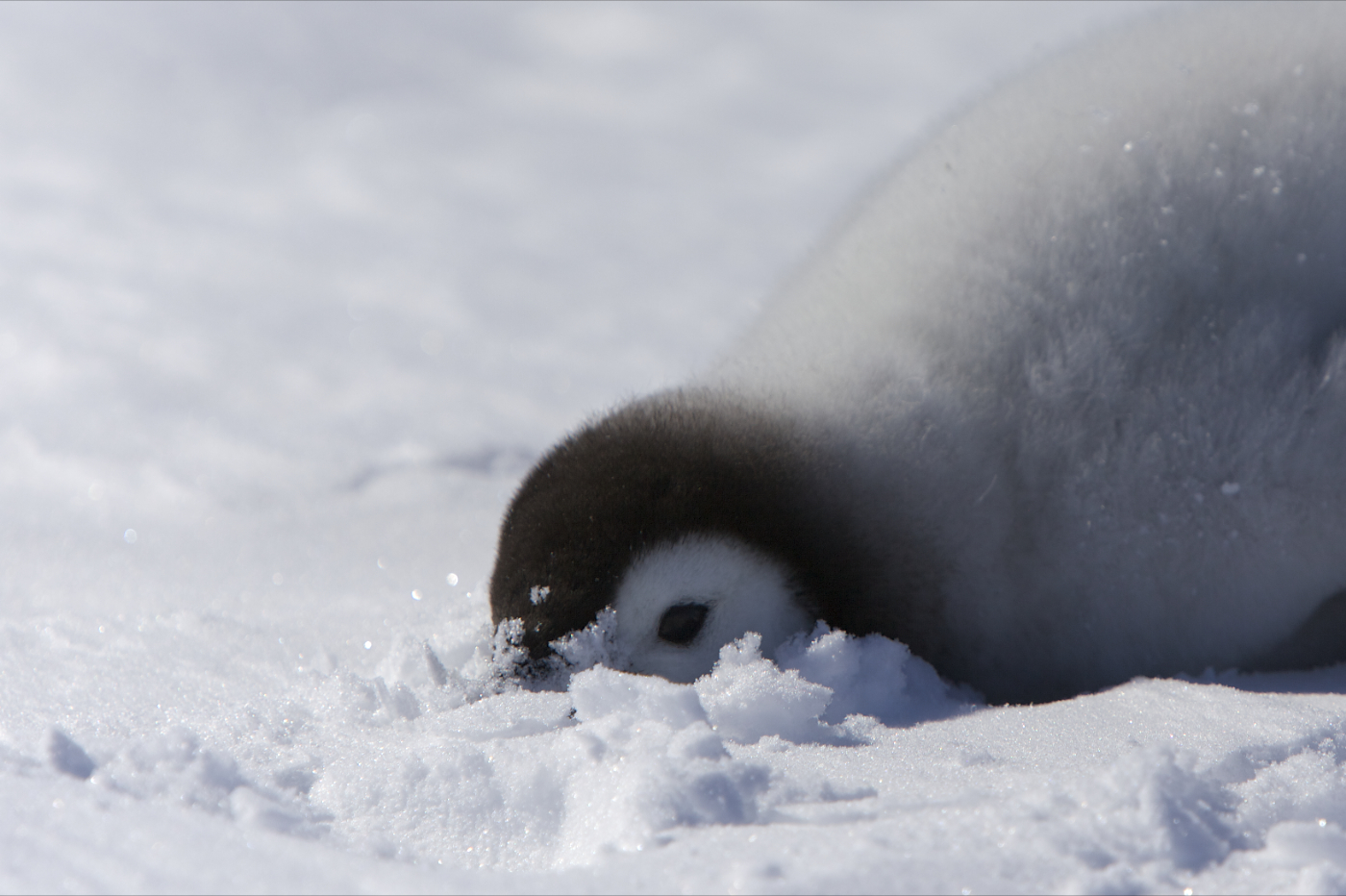
A juvenile Emperor Penguin (Aptenoydes forsteri), face down in the snow, Snow Hill Island, Antarctica: photo by Ian Duffy, 17 November 2009

Emperor Penguins (Aptenoydes forsteri) returning to Cape Crozier Colony, Antarctica: photo by Galen Rowell, 1992 (image by Manchot Sanguinaire, 29 October 2005)
A lone Emperor Penguin (Aptenoydes forsteri), Inexpressible Island, Antarctica: photo by M. Murphy, 29 January 2006
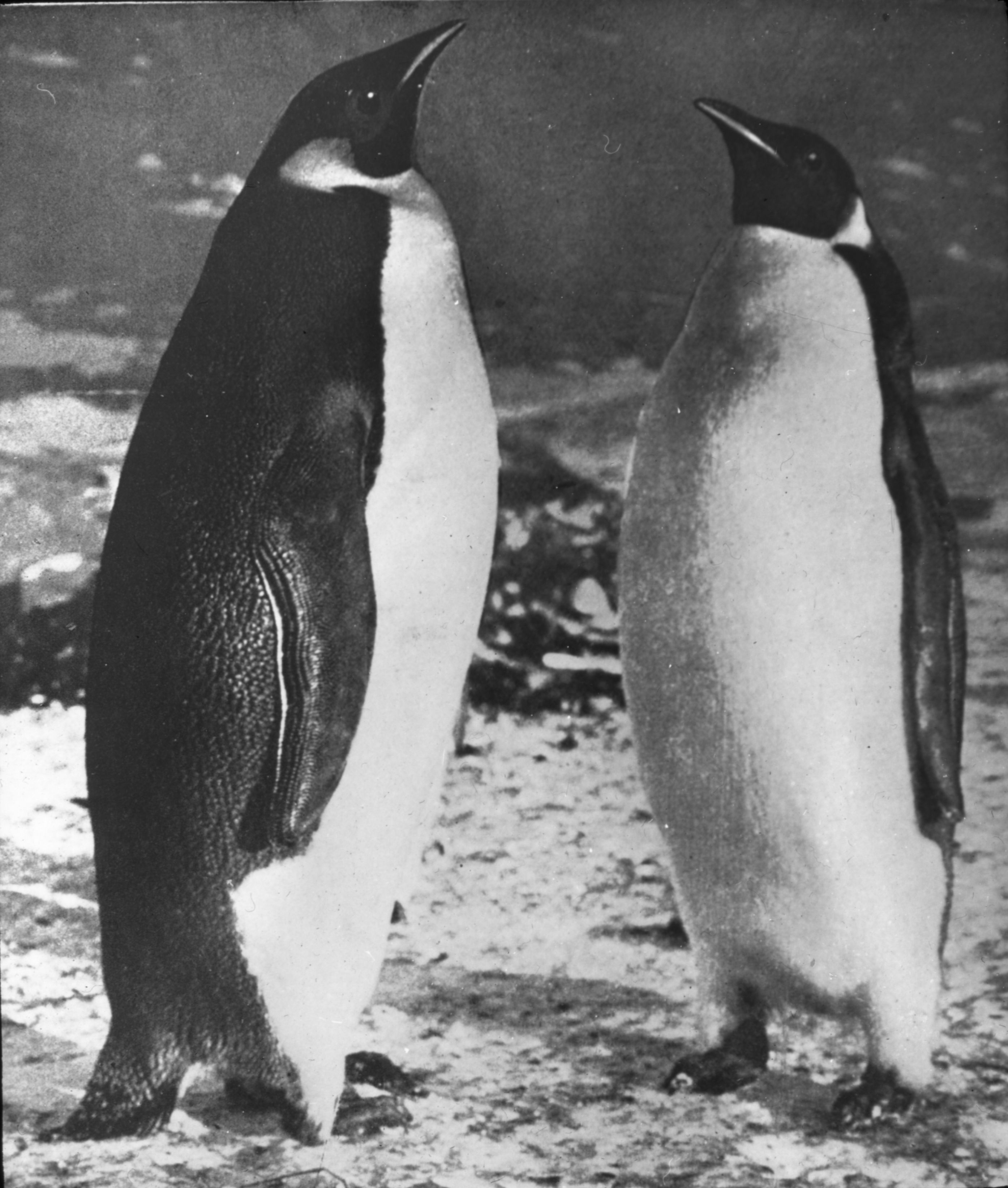
Emperor Penguins (Aptenoydes forsteri) seen on the Nimrod expedition (1907-1909) led by Ernest Shackleton: photo by Ernest Henry Shackleton (1874-1922) (image by Hgrobe, 9 September 2008)

Map of Antarctica showing habitat areas (red) and breeding areas (green) of Emperor Penguin (Aptenoydes forsteri): image by Sébastan Bruchet, 11 December 2004, based on map by Stefan Kühn
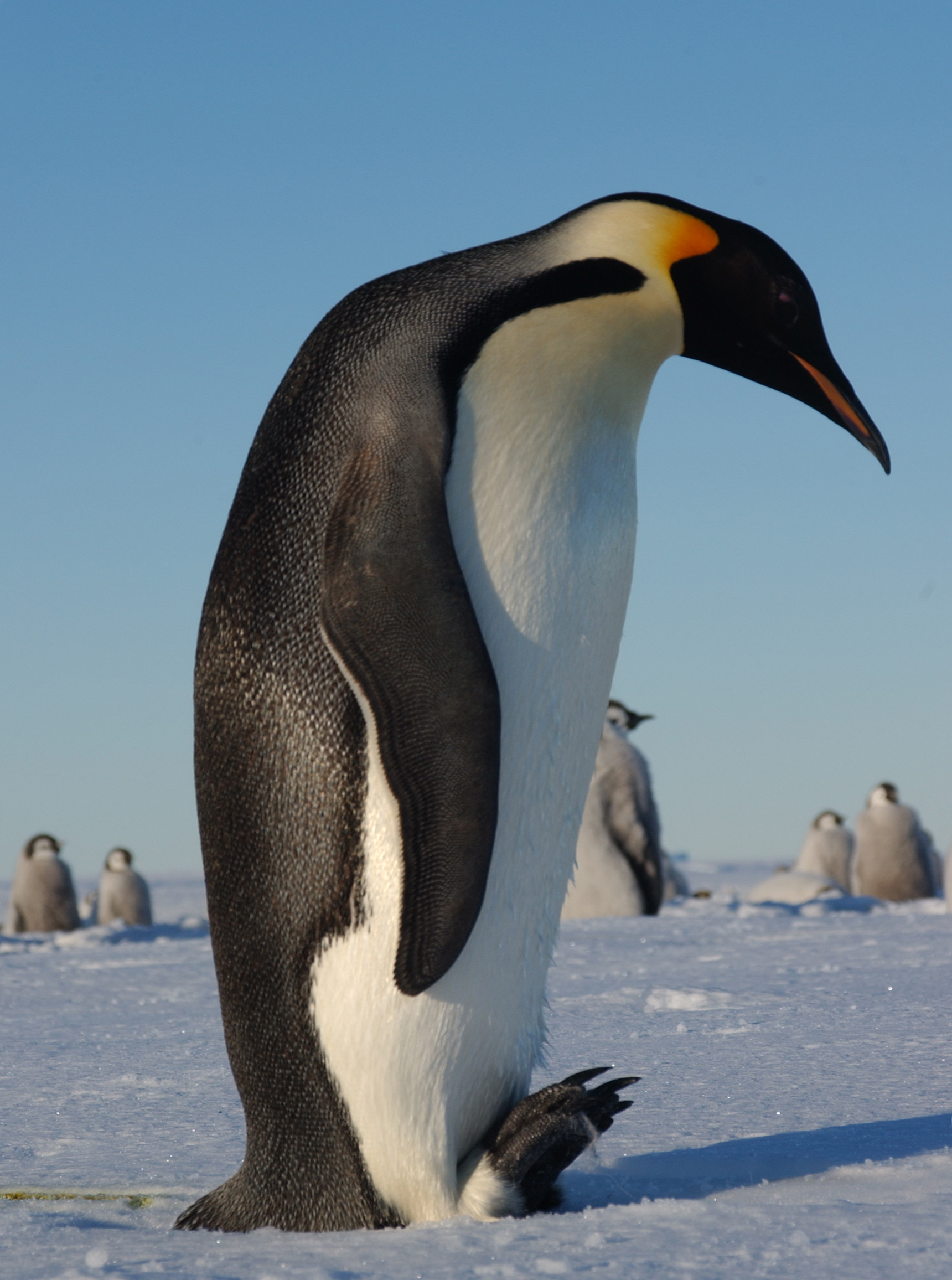
Emperor Penguin (Aptenoydes forsteri), walking, Atka Bay, Weddell Sea, Antarctica: photo by Hannes Grobe/AWI, 2004

Emperor Penguins (Aptenoydes forsteri), Atka Bay, Weddell Sea, Antarctica: photo by Hannes Grobe/AWI, 2004

A line of Emperor Penguins (Aptenoydes forsteri), Antarctica: photo by Glenn Grant, 2 October 2007 (National Science Foundation)
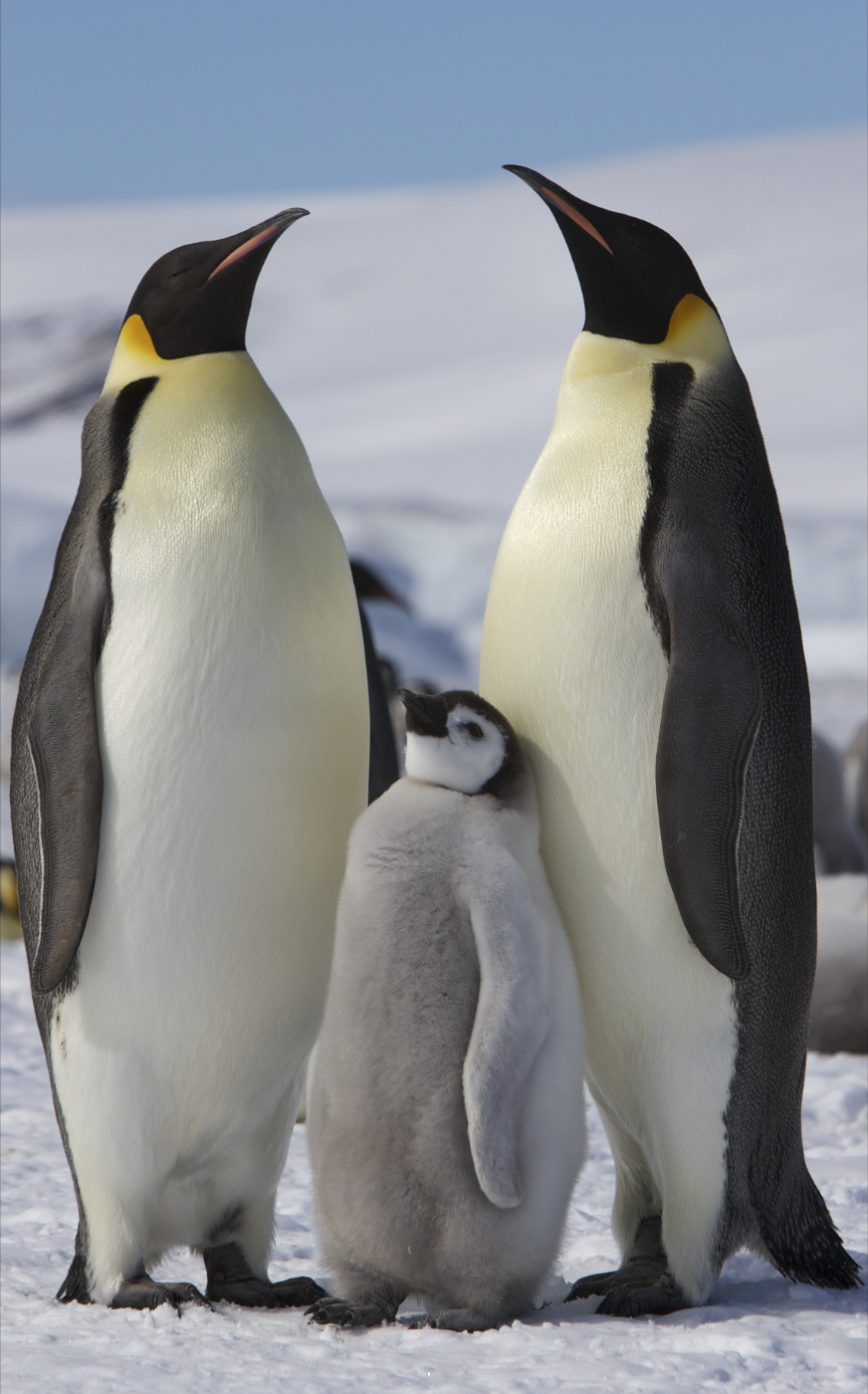
Two adult Emperor Penguins (Aptenoydes forsteri), with a juvenile, Snow Hill Island, Antarctica: photo by Ian Duffy, 17 November 2009

Emperor Penguin (Aptenoydes forsteri), Atka Bay, Weddell Sea, Antarctica: photo by Hannes Grobe/AWI, 2004

Emperor Penguins (Aptenoydes forsteri), colony, Atka Bay, Weddell Sea, Antarctica: photo by Hannes Grobe/AWI, 2004



3 comments:
Tom,
Beautiful!
6.24
light coming into sky above still black
ridge, planet below moon above branches
in foreground, sound of wave in channel
concealing word, appearance
of forget reference to
boy in foreground, painting
of some sort, close to
silver line of sun reflected in channel,
line of pelicans gliding toward horizon
The New Zealand Herald updates this story, which gets sadder and sadder:
____
25 June, 2011
X-rays have revealed that the young emperor penguin that travelled more than 3000km from its Antarctic home to a Kapiti Coast beach faces an uphill struggle to survive.
Veterinary staff [at Wellington Zoo] put the penguin under a general anesthetic to take x-rays and pump sand from its stomach.
"We got a lot of it out, but there's still a large amount that's very likely left in its stomach. And that can cause a lot of complications, so we really need to get it out," said Wellington Zoo vet science manager Lisa Argilla.
"We'll probably have to knock him out again tomorrow, and stomach flush him again."
No twigs or branches had been found in the penguin's stomach yet, she said, "but he was apparently witnessed eating sticks, so it's very likely they are in there".
Ms Argilla said the penguin was badly dehydrated and had been put on an intravenous drip.
"Normally these guys eat snow, and that rehydrates them. That's why he's been eating sand, because he doesn't know any better."
Feathers would need to be DNA tested to determine its sex, but an Australian expert had estimated the penguin to be about 3 years old.
Ms Argilla said it was too early to estimate the penguin's chances of survival, but it would be "amazing" if it pulled through.
"They can tolerate a fair amount of punishment, but it is a lot of sand that he's got in his intestines at the moment."
She said if the penguin did regain strength the best option would be to release it as far south as possible.
Boats or planes do not journey to Antarctica during the winter.
The only other emperor penguin to arrive in New Zealand was released in Foveaux Strait in 1967.
Kelly Tarlton's Antarctic Encounter in Auckland would not offer a long-term solution as it houses only subantarctic king and gentoo penguins.
"There are some zoos in the US that have emperor penguins, so I guess we could explore that option if it reached a point where we can't release him in subantarctica," Ms Argilla said.
Department of Conservation programme manager Peter Simpson said the penguin's condition had worsened in New Zealand's warm climate.
"Just remember that in Antarctica it's currently 24 hours' darkness, and probably about 30C or 40C below zero."
Both Mr Simpson and Ms Argilla were stumped why the penguin swam about 3200km to end up on the Kapiti Coast.
"There's a possibility that he just got stuck in a current, or he might be unwell," Ms Argilla said. "Or he's just on a big overseas experience. And there is the World Cup coming up."
Believe it or not, the Lost Emperor has survived, has been taken south by boat, and released, hopefully to find the way back home to Antarctica.
A tracking device allows a view of its progress, for now (until it manages to shed the device, that is):
The progress of Happy Feet
Post a Comment